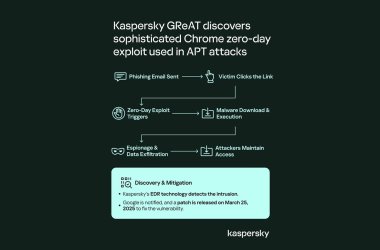DUBAI, UAE, 2nd February, 2022: Nutanix, a leader in hybrid multi-cloud computing, announced the findings of its fourth global Enterprise Cloud Index (ECI) survey and research report, which measures enterprise progress with cloud adoption. The research showed that multicloud is currently the most commonly used deployment model and adoption will jump to 64% in the next three years. But the complexity of managing across cloud borders remains a major challenge for enterprises, with 87% agreeing that multicloud success requires simpler management across mixed-cloud infrastructures. To address top challenges related to interoperability, security, cost and data integration, 83% of respondents agree that a hybrid multicloud model is ideal.

“While businesses are now viewing and using IT more strategically than ever before, the complexity of multicloud is creating challenges that are standing in the way of cloud success”, said Rajiv Ramaswami, President and CEO at Nutanix. “Solving for these complexities is giving way to a new hybrid multicloud model that makes cloud an operating model rather than a destination”.
This year, survey respondents were asked about their current cloud challenges, how they’re running business applications now and where they plan to run them in the future. Respondents were also asked about the impact of the pandemic on recent, current, and future IT infrastructure decisions and how IT strategy and priorities may change because of it.
Key findings from this year’s report include:
- Top multicloud challenges include managing security (49%), data integration (49%), and cost (43%) across cloud borders. While multicloud is the most commonly used operating model, and the only one expected to grow, most enterprises are struggling with the reality of operating across multiple clouds, private and public. This reality is not going away, and more and more IT leaders realise that there is no one-size fits all approach to the cloud, making hybrid multicloud, an IT operating model with multiple clouds both private and public with interoperability between them, ideal according to the majority of respondents.
- The pandemic has changed how nearly all organisations operate, and multicloud supports this new way of working. Well over half of respondents (61%) say they’re focused on offering more flexible work setups because of the pandemic. Most organisations report that while their remote workforces may shrink or grow, they are here to stay for the foreseeable future. Multicloud offers the most agile IT environment for supporting this flexibility by distributing data to diverse geolocations for user proximity, and business continuity.
- Application mobility is top of mind. Nearly all organisations (91%) have moved one or more applications to a new IT environment over the last 12 months. However, 80% of respondents agree that moving a workload to a new cloud environment can be costly and time-consuming. They cite security (41%) most often as the reason for the move, followed by performance (39%), and gaining control of the application (38%).
- Enterprises are growing more strategic in their use of IT infrastructure. Nearly three-fourths of respondents (72%) say they believe that the IT function in their organisations is perceived as more strategic than it was a year ago. They also cite business reasons for changing their infrastructure models, such as improving remote work and collaboration (40%), supporting customers better (36%), and strengthening business continuity (35%). Additionally, they’ve begun strategically matching each workload to the infrastructure best suited to it, based on factors such as security (41%), performance (39%), and cost (31%), likely a primary driver behind the proliferation of multicloud.
For the fourth consecutive year, Vanson Bourne conducted research on behalf of Nutanix, surveying 1,700 IT decision-makers around the world in August and September 2021. The respondent base spanned multiple industries, business sizes, and the following geographies: the Americas; Europe, the Middle East, and Africa (EMEA); and the Asia Pacific Japan (APJ) region.
To learn more about the report and findings, please download the full fourth Nutanix Enterprise Cloud Index, here.





